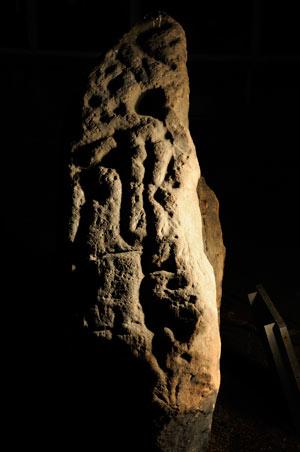The (even longer) long history of the Calderstones

The Calderstones (or Calder Stones as they’re historically known) are the fascinating remnants of a Neolithic chambered tomb in Calderstones Park. A recent project by The Reader has conserved the stones and made them accessible again – you can visit them daily 10am-4pm and explore them in detail. There is lots of great information about them and the history of the Mansion House and the Park!
The Calderstones are carved with numerous symbols dating from the Neolithic period (around 3000 BC) to modern times. Some of the most intriguing carvings are spirals which are similar to markings seen on similar tombs in Ireland and north Wales – suggesting some prehistoric cultural links around the Irish Sea.
The stones are a very special monument in Liverpool, of which I’m very proud. The spirals carved on them even inspired our floor decoration in the Museum of Liverpool!
It’s always interesting to hear people describe archaeological objects from a different point of view, though, and geologists see the sandstone of these monuments in a completely different light! Far from being 5000 years old (as the oldest carvings are) these stones themselves were formed in the Triassic, 260 to 230 million years ago! At this time Merseyside was part of a vast desert situated near the equator. As plates shifted the land moved north to its present location and the sand-dunes solidified into rock when water passing through the sand helped create mineral bonds. These rocks therefore tell us an amazing story of the reshaping of continents and changing environments. Hints of the deserty past remain in some locations where the cross-cutting layers of sand are still visible, especially in the cuttings seen on mainline train routes out of Lime Street Station.

Sandstone is used in many local buildings which have their one stories to tell, and also the story of the changing environment of the region.
The Calderstones and their markings are incredibly special and important in understanding our human prehistoric past. The stone they are made from also has a longer pre-human past which helps us understand our place even more!
